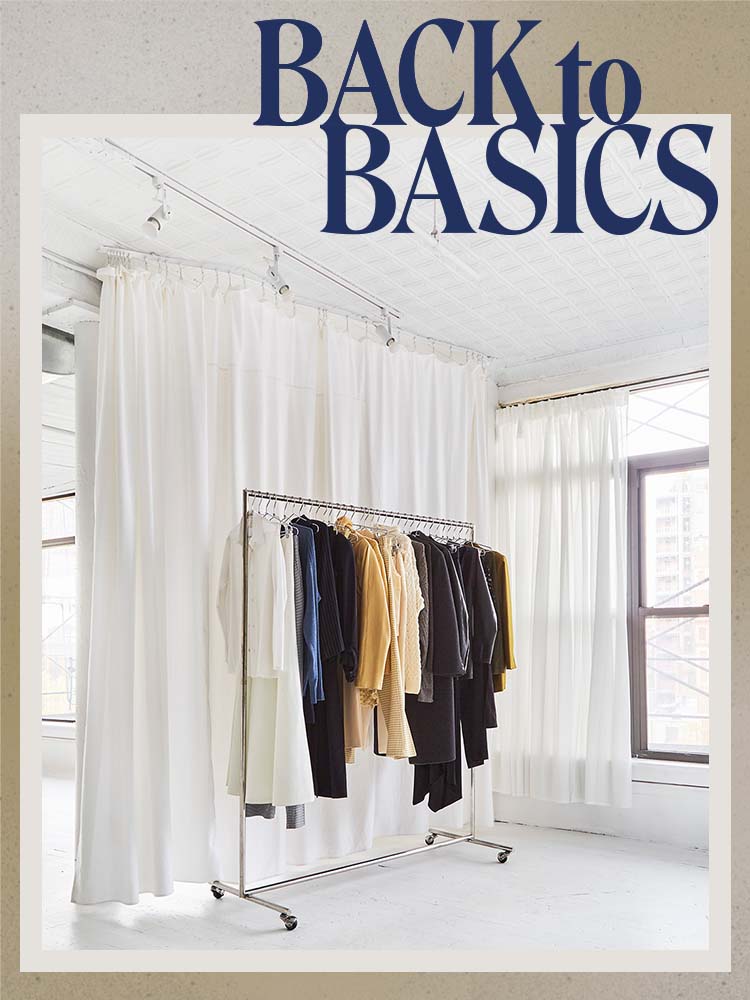How to Hang Curtains From the Ceiling And Why It’s Better Than Using a Rod
Gain more creative control over your space.
Published Mar 5, 2022 1:00 AM
We may earn revenue from the products available on this page and participate in affiliate programs.
Hannah Richtman had a vision: ethereal window coverings that could instantly transform into room dividers for customers to privately try on clothes, while easily blending into the all-white background when not in use. They would make her New York retail-event space, The Break, look like a chic apartment. Obviously, not just any curtain rods would do for this job—she needed flexible mounting tracks (which made for an absolutely gorgeous setup in the end). We tapped Richtman to explain how to hang curtains from the ceiling ourselves, plus why this method can actually be better than using a rod. Read on for her tips.
Why You Should Hang Curtains From the Ceiling
For starters, a flexible ceiling track allows you to create your own curtain shape and have more control over the panels’ proximity to the window. A rod, on the other hand, restricts you to hanging curtains in a straight line and solely above or flush against the window (not ideal if your space has funky ceiling lines). Also this method can turn your curtains into makeshift screens, whether you need to separate a workspace from a main living area or define a reading nook within a playroom. “You can pick how you would want to section off spaces,” Richtman explains. “And then you can also reopen the room if you want.” Electrical components, storage spots, or anywhere you need regular access to but don’t necessarily want visible are also fair game for hiding behind fabric, she adds.
How to Choose the Shape of Your Ceiling Tracks
Do you want to simply construct a unique display (Richtman loves the idea of circular curtains in an apartment), hang a backdrop, or create an aesthetically pleasing storage compartment? Similarly, consider whether you want your curtains to minimize or maximize light exposure and make the room appear larger or smaller. “For us, it was important to have the fitting rooms close enough to the windows where we could push the curtains back and have them blend in with the existing space,” explains Richtman.
Curtain recommendations from our editors:
Once you understand their function, think about how the configuration of the tracks will affect your space’s overall flow, like whether it works well with your current furniture placement. Also be sure that the ceiling is compatible with your desired outline. The Break’s is a bit uneven and made of metal tin, which influenced Richtman’s design of choice. “We had to watch out for the exposed piping,” she notes.
How to Hang Curtains From the Ceiling
The Supplies
- Ladder
- Marker
- Drill and drill bits
- Ceiling track kit
- Tab-top curtains
- Duct tape in a color that matches your ceiling
- Goggles
- A friend to assist
Step 1: Create the Track Shape
Lay the track on the floor and use your hands to bend it into the shape you want. You can soak the track in hot water to increase its flexibility, but Richtman found the material pliable enough to skip this step.
Step 2: Mark and Mount the Brackets
With a friend’s help, hold the bent track up to the ceiling and use a marker to label where you plan to mount the brackets. Put down the track and climb back up the ladder to drill holes into the designated spots. Secure the brackets using the drywall anchors and screws that come with the kit.
Step 3: Attach the Rollers and Hooks to the Track
Your kit will come with curtain hooks and a roller that clamps onto the track and allows the curtains to slide open easily, but they’ll need to be assembled first. Slide the circular part of the hook through the metal fixture on the bottom of the roller. Do this for all the hooks. Then slide the U-shaped opening of each roller onto the track.
Step 4: Attach the Ceiling Track to the Brackets
Gently snap the ceiling track into place, making sure that the roller/hook attachments are facing the floor.
Step 5: Hang the Curtains
Loop the tabs lining the top of your curtains onto the hooks. Richtman’s mom custom-made curtains with a specific amount of tabs to create a pretty pleating effect, so you may need to purchase extra hooks if the kit doesn’t come with enough. (You can find them on Amazon.)
“Especially if your ceiling is a little wonky, you want to make sure that the weight is equally distributed along the curtain so that it doesn’t pull anything down,” says Richtman. “For a super-lightweight, sheer curtain, you probably don’t need as many hooks, but we have heavy-duty cotton curtains that are like blackouts.”
Step 6: Secure the Track Ends With Duct Tape
If your track configuration isn’t a full circle, Richtman suggests taping down both ends to make sure the curtains don’t fall off the edges when you’re opening and closing them. No walls, no problem.

